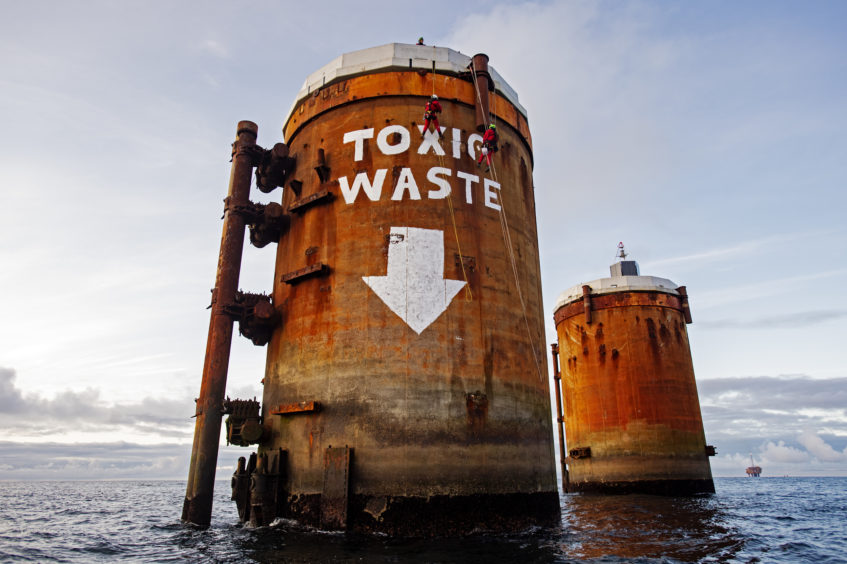
A decision on whether Shell will be allowed to keep the giant legs of the Brent field in the North Sea forever has been “postponed”.
The Ospar Commission, the intergovernmental body to protect Europe’s marine environment, confirmed the UK Government has still not made a decision on the controversial plans, 11 months on since the last formal meeting on them.
The legs of the Shell Brent Bravo, Charlie and Delta, made of steel and concrete, each weigh around 300,000 tonnes and are taller than the Eiffel Tower.
Protestors and Ospar member countries are concerned that leaving them in place will see the oil-sediment contents of these legs – known as Gravity-based structures (GBS) – released into the sea as they degrade over hundreds of years.
The UK Government’s intention is to allow Shell to leave the structures in place through a derogation to the Ospar Convention.
Germany, among others, has been a staunch critic of the proposals, while protests have been staged at the Brent field by environmentalists (as recently as last week).
An Ospar meeting was held in October last year, after which the UK agreed to continue talks with member countries before a decision is made.
A spokesman for Germany’s Environment Ministry confirmed to Energy Voice that an Ospar-UK briefing was sent to members this week stating that, while work is progressing, it has been “somewhat delayed due to working conditions”.
Bi-lateral technical talks between the UK and Germany were held in Bonn in January, the spokesman added.
The UK’s Department for Business, Energy and industrial Strategy (BEIS) has not given any indication of when a decision might be made.
Ospar is a convention requiring the complete removal of oil and gas infrastructure after use, with derogations granted in exceptional circumstances.
An Ospar Commission spokeswoman said: “The UK’s decision on the potential draft conditions for the Brent Bravo, Brent Charlie and Brent Delta derogation permit has been postponed.”
While Ospar member countries may give input on the plans, it is the UK which legally has final say.
‘Regular updates’
It is estimated that around 11,000 tonnes of oil lie within the structures, however Shell states that this is not free-floating but bound to sediment comprised of sand, grit and water.
Shell argues it will take “centuries” to degrade as the sediment is encased in concrete, while the safety risk and cost of removing these giant structures would outweigh any environmental benefit.
The Brents are among the older installations in the North Sea and the GBS, which were not made with removal in mind, are no longer used in construction.
However, there are around 22 operational gravity-based structures across the region and it is thought the Brent decision may act as a precedent.
A spokesman said BEIS has given “regular updates” to Ospar member countries since the last meeting in October.
He added: “Decommissioning proposals are considered on a case-by-case basis and only approved following appropriate consultation with stakeholders, including the public, the Oil and Gas Authority and Ospar Contracting Parties.”
Separate decommissioning projects have been carried out for the Brent topsides, most recently the Brent Alpha in June.
Recommended for you





